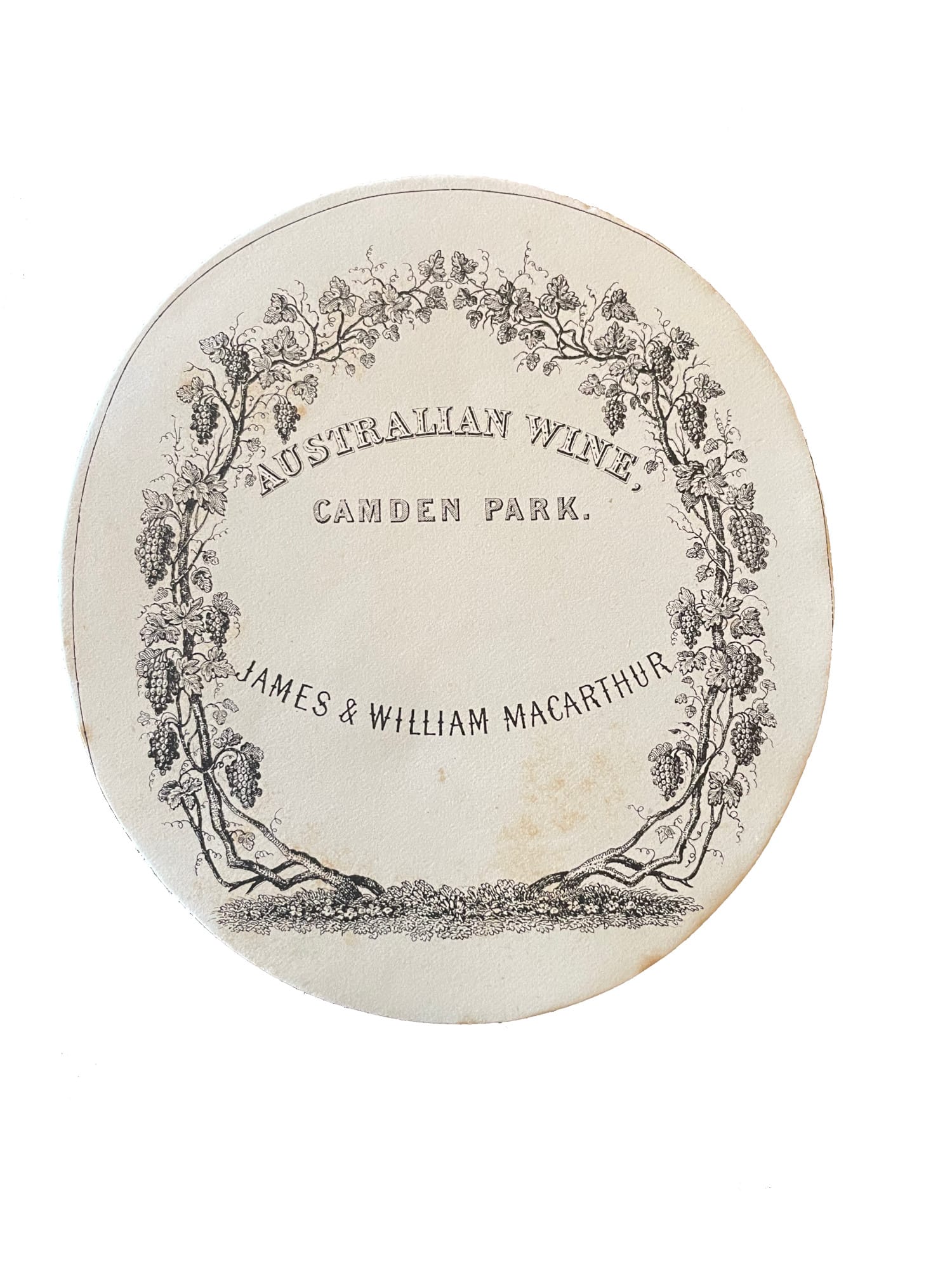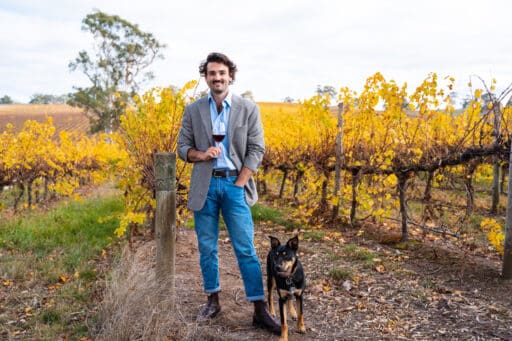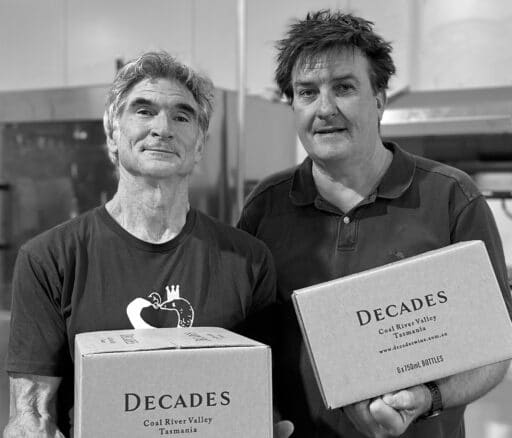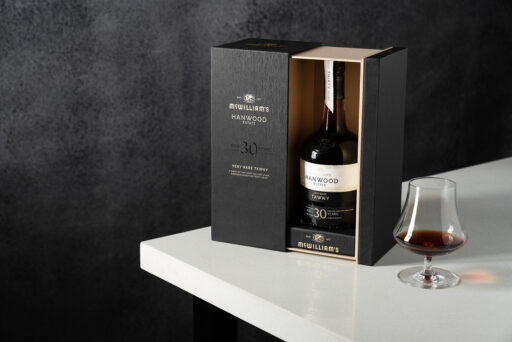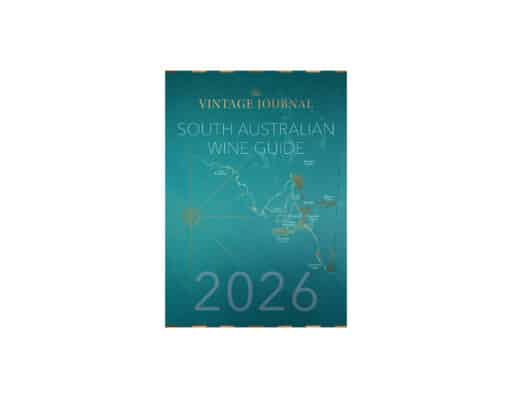The earliest days for the Australian wine industry were not easy. Cuttings first had to successfully make the long trip around the world and, while some were collected at the Cape Colony during the journey including Chenin Blanc and Semillon, much was transported directly from England. At the time there was widespread interest in botany with numerous significant sources of grapevine stock available in England, including from Kew Gardens and established vineyards in Surrey, which supplied various vinestocks. The earliest visitors to Australia also probably brought with them two varieties often used for London wall gardens at the time, small black cluster and black cluster, better known now as Pinot Noir and Pinot Meunier.
The country’s first vineyards were planted close to the first Government house near Sydney Cove, but they would not last. Poor sandstone soils, an unreliable water supply and humidity would prove to be insurmountable obstacles for long term success. But keen to progress, cuttings were taken west along the Parramatta River to where the climate and soils were less challenging.
The Parramatta River, a key artery to modern Sydney, and its tributaries played a vital role for early vignerons and nearby vineyards would prove to be home to the first Australian wines acknowledged for their quality in international circles. Brush Farm at the Field of Mars near Ryde won numerous medals, starting with a silver medal in 1823 for a Claret, although probably made from Pinot Noir, with gold medals to follow in 1828, again made with Pinot Noir and fortified with brandy for the journey to England.
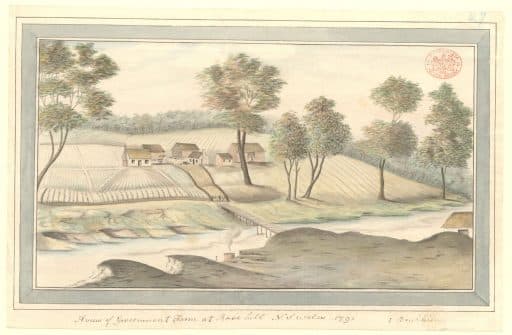
Considering the country’s recent experience with Pinot Noir and where it flourishes, it is truly remarkable that Australia’s first award winning Pinot came from the unremarkable Sydney suburb of Ryde. Within fifty years of first settlement, other vineyards also began to flourish near the Parramatta River, from Parramatta east to Annandale, Glebe and Ruschutter’s Bay, as well as around the Sydney basin from Camden and Penrith to Castle Hill and Mona Vale. Even in these early days, commentators both here and abroad truly believed in Australia’s wine potential and the country’s opportunity to become the France of the Southern Hemisphere.
Considering the country’s recent experience with Pinot Noir and where it flourishes, it is truly remarkable that Australia’s first award winning Pinot came from the unremarkable Sydney suburb of Ryde. Within fifty years of first settlement, other vineyards also began to flourish near the Parramatta River, from Parramatta east to Annandale, Glebe and Ruschutter’s Bay, as well as around the Sydney basin from Camden and Penrith to Castle Hill and Mona Vale. Even in these early days, commentators both here and abroad truly believed in Australia’s wine potential and the country’s opportunity to become the France of the Southern Hemisphere.
Sydney’s significant history of vineyards and winemaking has now largely been forgotten with the remnants hidden below suburbia but dozens of vineyards were planted, some of which were very important commercially and also pivotal in growing the Australian wine industry. At Camden Park, the Macarthur family built a formidable nursery, and vineyard, which was a leading source of vinestock material used to populate the country’s early vineyards and likely played a more important role than James Busby in the development of Australia’s wine industry. The Macarthur’s aspirations can be seen by some of the earliest wines to bear the Camden Park label, including the 1824 Red Burgundy, offered in 1857 as a “First Grewth”. Minchinbury in Western Sydney also played a significant role as home to one of the country’s ground breaking sparkling wines.
But it was near Parramatta where the first wine is said to have been made. Government Farm was established soon after settlement to feed the new colony in a more hospitable and fertile environment away from the challenges of Sydney Cove. Alongside fruit trees, vegetables and other cereals, 2,000 grapevines were planted no doubt with a mix of varieties. While its location was described as Rose Hill, the farm itself was located on the northern side of the Parramatta River across a small bridge from the grand Government House, the original farm now home to Parramatta Park and the Parramatta Football Stadium.
Bottles of the country’s first wine were apparently taken by Governor Phillip on his return journey to England in 1792 which was recounted by a German scientist where it was described as “a strong red wine from Rosehill near Sydney Cove” although its provenance is uncertain. Letters to Joseph Banks in 1795 talked of a Phillip Schaeffer, German mercenary and winemaker, who was already making wine in the area at that time. He had planted his Rosehill vineyard a little further to the east in 1791 but it is unlikely that this is the source as the vines would have lacked the maturity for fruit production. Potentially, the grapes were taken from the nearby Government Farm, planted some years earlier for this mysterious 1792 dry red. Whatever its source, this vinous legend probably marked the first small steps in Australia’s grand wine history.
This article is the first in a series written from history uncovered by Andrew Caillard MW in research for The Australian Ark. Limited copies of The Australian Ark can now be purchased here.


